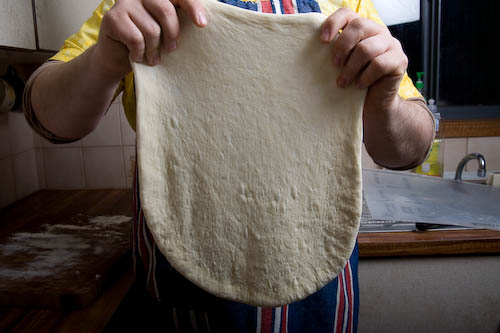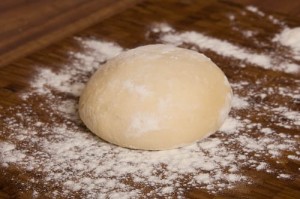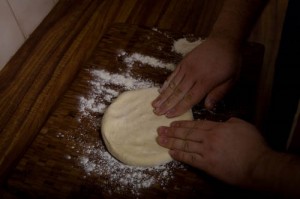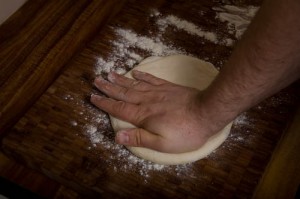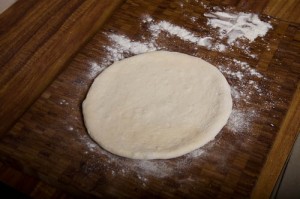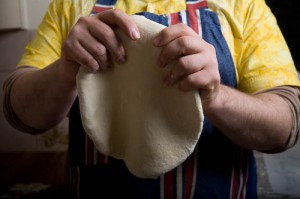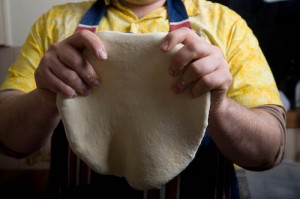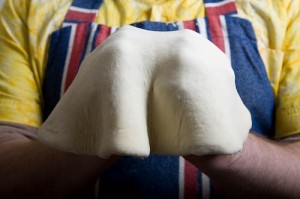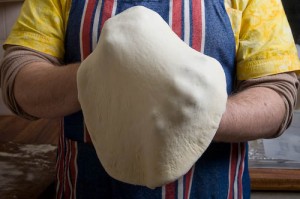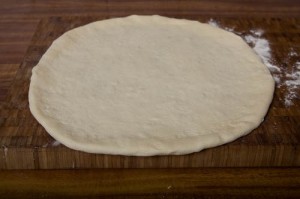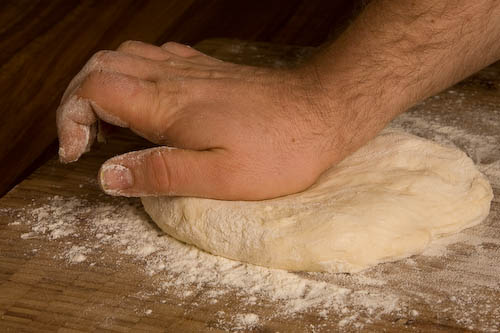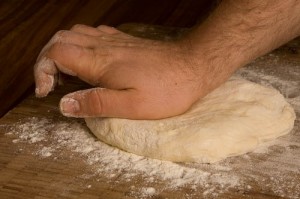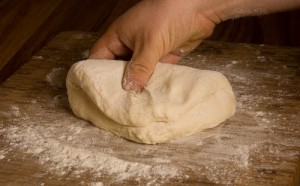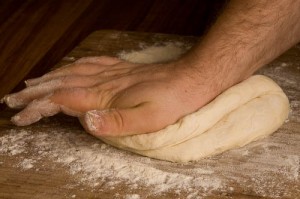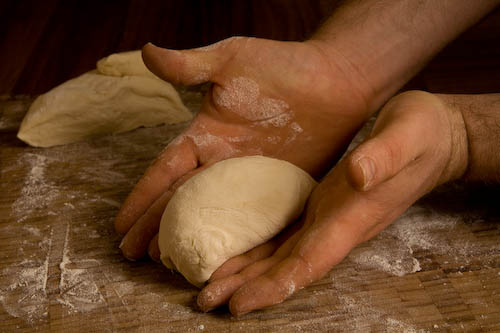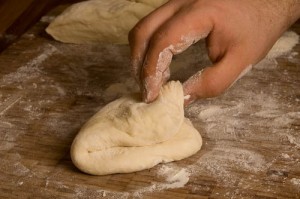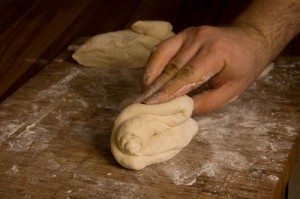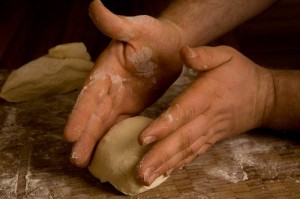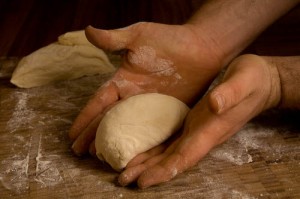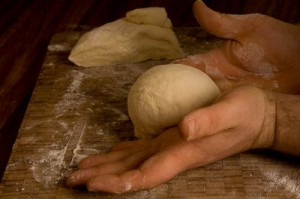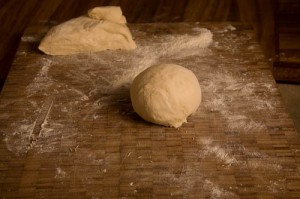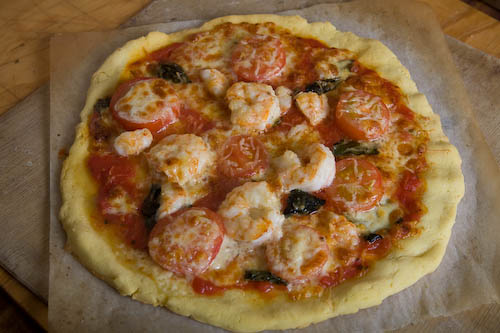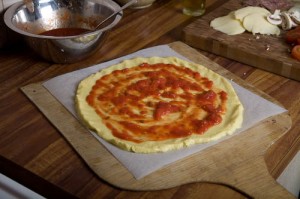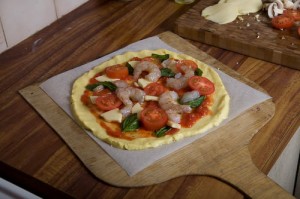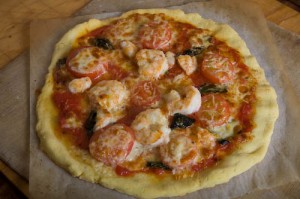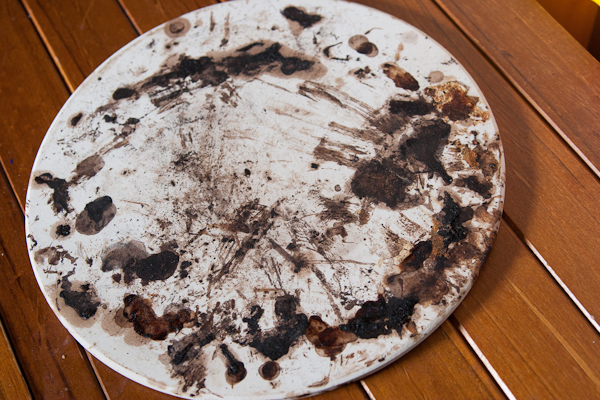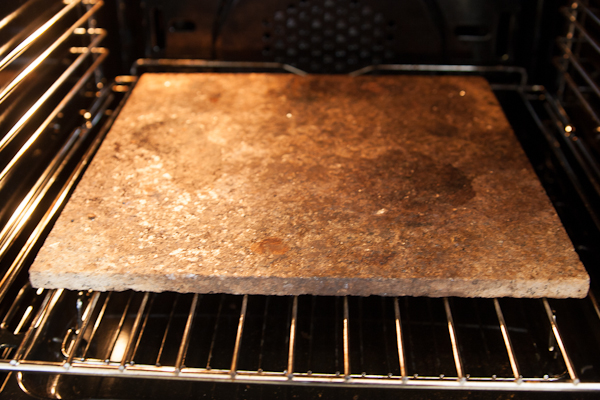Last night I planned to fire up the wood fired oven for a pizza party. I had my dough balls and ingredients ready and laid out, and even made a new peel for the occasion! The only problem was that when it came time to cook pizzas, my oven was too wet from all of the rain we’ve been having (I should really stop procrastinating and render the oven so that it doesn’t get waterlogged in the rain, but that’s another story).
Wondering how I could feed the hungry hordes without even having a pizza stone preheated in my inside oven, I remembered something else I read on the net a while back and thought I’d give it a try. It worked so well that I wanted to share it so that you too can have a backup plan if you need to cook some emergency pizzas one day!
You will need
- Pizza dough, sauce, other toppings (obviously)
- A cast iron skillet (frying pan with a metal handle)
- An oven with a grill (broiler)
How it works
- Put your skillet on your stovetop burner and preheat it on high heat for 15 minutes
- Turn on your grill and leave it long enough that you can see it glowing (if using an electric grill, gas versions won’t need to preheat)
- Prepare your pizza on a floured peel, making sure that your base is not larger than the base of the skillet
- Using oven mitts or a tea towel, take your skillet off the burner and turn it upside down. Slide your pizza onto the skillet.
- Quickly place the pizza + skillet on an oven rack below the grill. The top of the pizza should be 2-3 inches below the grill.
- Watch the pizza as it cooks, you can easily overcook if you aren’t careful. The pizza should take 2-3 minutes to cook. You may need to rotate your pizza 180 degrees half way through cooking.
- Before cooking your next pizza, return the skillet to the hotplate for a few minutes to reheat the base. Or use 2 skillets, alternating so that you don’t have to wait between pizzas.
This method works because the pizza is cooked evenly at a very high heat from above and below, similar to a wood fired oven. The pizzas were actually quite close in appearance to those from my wood oven, although the sides of the crust did not cook quite so evenly. But this trick is absolutely worth adding to your home made pizza arsenal!
NOTE: be very careful as the handle of the skillet will be very hot. Wear oven mitts and use a tea towel when lifting te pizza. This should only be done under adult supervision.
